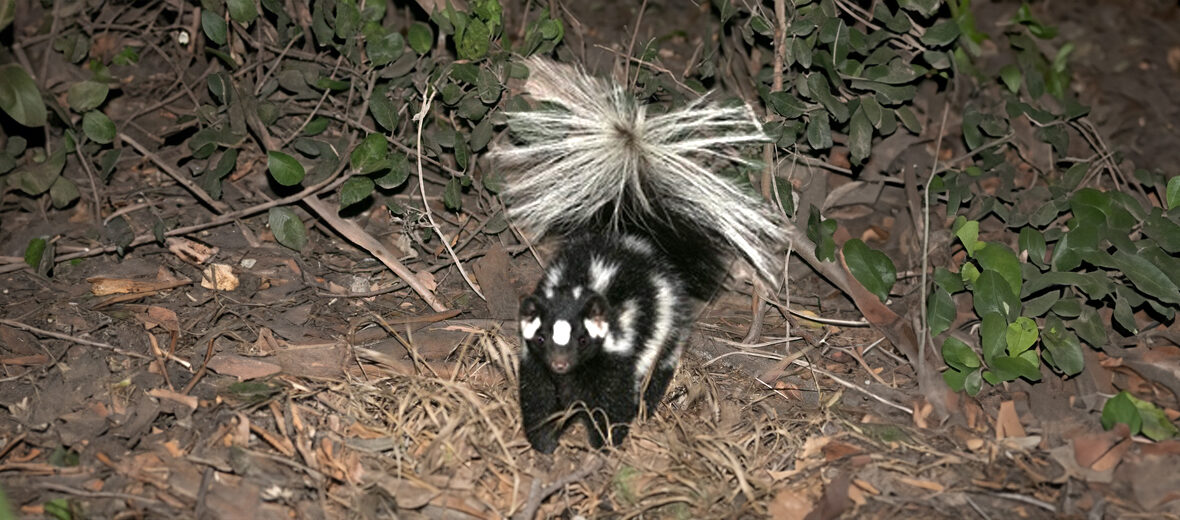
The southern spotted skunk can be found from southern Mexico to Central America. Their coloration makes them look surprisingly like a western or even an eastern spotted skunk. They face the threats of habitat loss and destruction at the hands of monoculture (the development of a single crop), and fires; as well as habitat division at the hands of roads, that can lead to vehicle strike – being hit by vehicles. However, they are abundant enough to earn the classification of Least Concern by the IUCN.
First the Stats…
Scientific name: Spilogale angustifrons
Weight: Up to 2.2 lbs.
Length: Up to 13 inches, plus up to a 9.1 inch tail
Lifespan: Up to 10 years
Now on to the Facts!
1.) Their population trend is currently listed as stable by the IUCN.
2.) Like all skunks, they have the ability to spray a powerful smelling musk from glands under the base of their tail.
3.) Before they spray, they will arch their back and turn around and face their back end towards the perceived threat. If the warning isn’t heeded, they will spray their opponent in the face with a potent musk, with amazing accuracy.
4.) The musk can cause temporary blindness and nausea.
5.) They prefer dry rocky regions with scrub brush and open woodland, as well as agricultural areas.
But wait, there’s more on the southern spotted skunk!
6.) These, like other skunks, are nocturnal (active at night).
7.) Just like other skunks they are solitary and only come together to mate.
Did you know…?
A skunk’s musk can only be effectively eradicated with a mixture of 1 quart of 3% hydrogen peroxide, 3/4 cup of baking soda, and 1 – 2 teaspoons of liquid dish soap. Tomato juice, the traditional go to, only temporarily masks the smell.
8.) While they can climb very well, they are primarily terrestrial (spend their lives on the ground).
9.) Small mammals, insects, birds, eggs, grain, and fruit are all on the menu.
10.) Females undergo up to a 65 day gestation (pregnancy) that yields up to 5 kits.
But wait, there’s still more on the southern spotted skunk!
11.) Bobcats, coyotes, and owls all take their chances of preying on these skunks.
12.) Skunks, on average, have but 5 – 6 sprays available before they have to spend time… reloading, so to speak, and building up a new batch.
Now a Short Southern Spotted Skunk Video!
This video talks about skunks in general.
Be sure to share & comment below! Also, check out the Critter Science YouTube channel. Videos added regularly!
Want to suggest a critter for me to write about? Let me know here.
Some source material acquired from: Wikipedia & IUCN
Photo credit: iNaturalist




